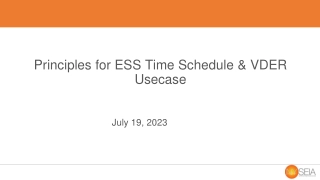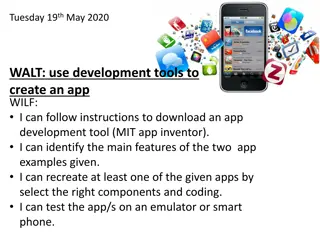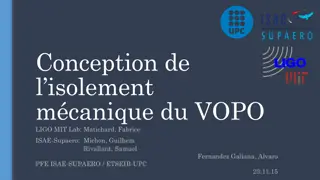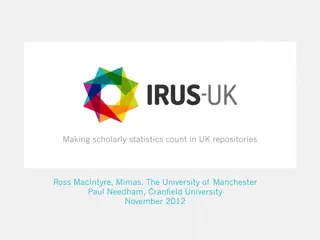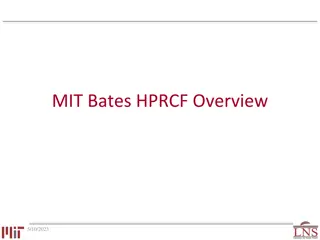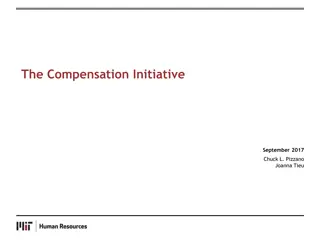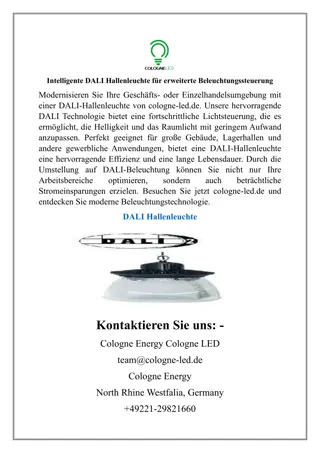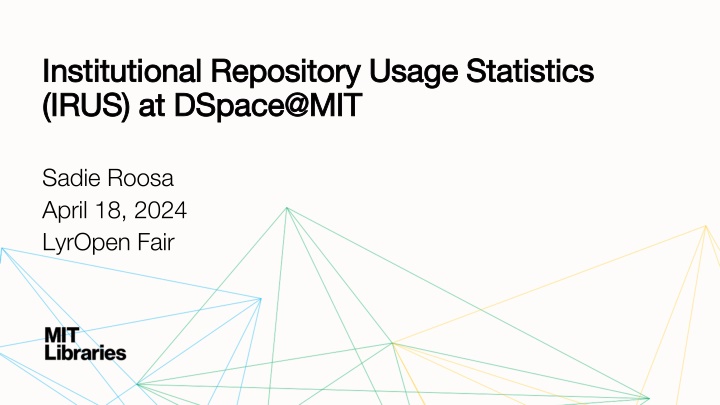
Enhancing Institutional Repository Usage with IRUS at MIT
"Explore the implementation of IRUS at MIT's DSpace repository, the benefits, challenges, and its impact on open scholcomm infrastructure. Learn about standardization, value demonstration, easy setup, and potential benefits of IRUS. Discover how MIT is utilizing IRUS for reporting and tracking repository usage."
Download Presentation

Please find below an Image/Link to download the presentation.
The content on the website is provided AS IS for your information and personal use only. It may not be sold, licensed, or shared on other websites without obtaining consent from the author. If you encounter any issues during the download, it is possible that the publisher has removed the file from their server.
You are allowed to download the files provided on this website for personal or commercial use, subject to the condition that they are used lawfully. All files are the property of their respective owners.
The content on the website is provided AS IS for your information and personal use only. It may not be sold, licensed, or shared on other websites without obtaining consent from the author.
E N D
Presentation Transcript
Institutional Repository Usage Statistics Institutional Repository Usage Statistics (IRUS) at DSpace@MIT (IRUS) at DSpace@MIT Sadie Roosa April 18, 2024 LyrOpen Fair
Introduction Sadie Roosa - Collections Strategist for Repository Services at MIT DSpace@MIT - custom DSpace 6.3 app, hosted by Atmire IRUS set up in October 2023
Overview Why we chose to set up IRUS Benefits and potential benefits of IRUS How we are using IRUS so far Challenges with usage stats
Open scholcomm infrastructure Libraries budget repurposed for open and equitable scholarship Supporting open infrastructure, not just open content
Standard - COUNTER Better align reporting on use of content in our repository with user of other libraries collections Better align reporting on use of content in our repository with use of content in other (non- DSpace) repositories
Demonstrating value A more centralized, transparent place to show how much our repository is used and add to the story of how much repositories are used across the board - Breakdowns by country of user - Breakdowns by content type
Easy set up Easy to set up a. DSpace 6 tracker code plug in (tracker code incorporated in codebase from DSpace 7 on) b. Simple onboarding document with Lyrasis c. Only took a few emails back and forth!
Potential benefits DOI and ORCID search promises a lot a. a reason to work towards better ORCID integration in our repository b. a reason to promote more folks to use IRUS so we can aggregate more stats on DOIs representing items deposited in multiple repositories
How we are using IRUS So far just running reports manually for content types of interest and regular monthly/annual reporting
What can we use it to count? Monthly/yearly use since we set IRUS up Entire repository Specific content types Individual items Most popular items in various categories for a set period of time Ex: Most popular thesis by total item requests in February 2024
What cant we use it to count? All time numbers Especially for individual items, most authors, librarians, and users are interested in total download count Our repository has been around since 2002 and there are 130,000+ items that have previous downloads not counted in IRUS
Reporting on subsets Our repository isn t organized by content types and not everything has a content type We ve historically reported along collection lines and we can t do that in IRUS a. Do we do both? b. Do we shift what we re reporting on?
Thank you! Please feel free to reach out at sroosa@mit.edu





